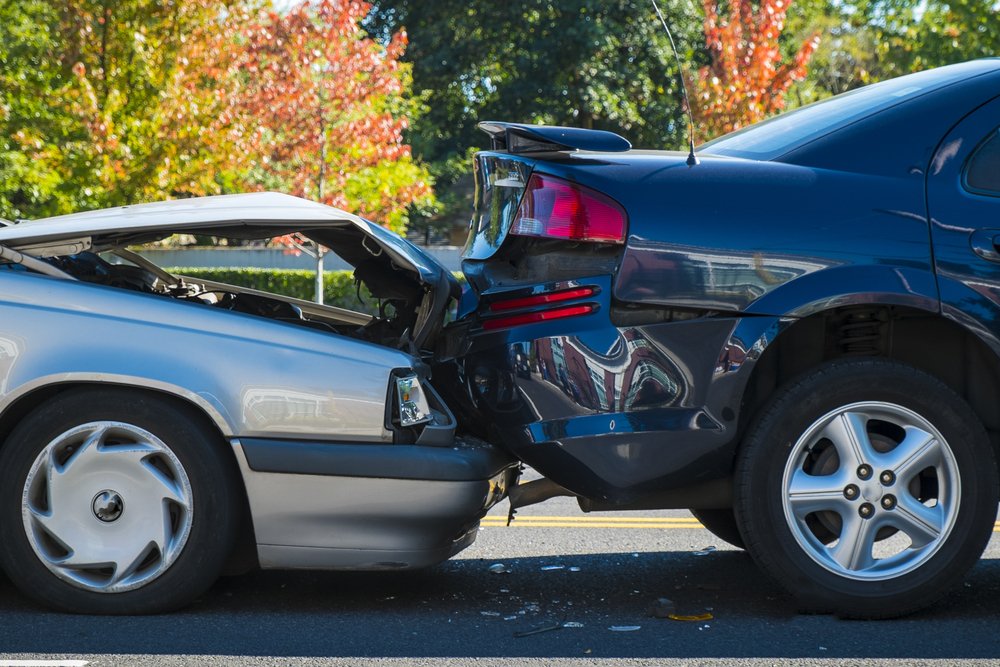Not-At-Fault Car Accidents
What if, on a bright and sunny day, you’re zipping along the highway, enjoying the tunes on your favorite radio station, when suddenly, out of nowhere, a reckless driver barrels into you from behind? You’re not at fault, yet now you’re stuck dealing with the aftermath of a not-at-fault car accident.
This article will guide you through navigating the complexities of a not-at-fault car accident. We’ll cover everything you need to know, from determining fault to filing a claim and getting your car repaired or replaced.
Determining Fault
The first step in any car accident is determining who’s at fault. This can be a tricky process, especially in cases where both drivers are partially to blame. In a not-at-fault accident, the other driver is solely responsible for causing the accident. This means that they were either negligent or reckless, and their actions directly led to the collision.
There are several factors that can help you determine fault, including witness statements, police reports, and evidence from the scene of the accident. If possible, try to get the names and contact information of any witnesses, and take photos of the damage to both vehicles.
Filing a Claim
Once you’ve established fault, it’s time to file a claim with the other driver’s insurance company. Be sure to provide as much information as possible, including the date, time, and location of the accident, as well as the names and contact information of any witnesses. You should also attach copies of any evidence you have, such as photos of the damage and police reports.
The insurance company will investigate your claim and make a determination on fault. If they find that the other driver was at fault, they will typically cover the cost of your damages, including medical expenses, property damage, and lost wages.
Getting Your Car Repaired or Replaced
If your car is damaged in a not-at-fault accident, the insurance company will typically pay to have it repaired or replaced. In most cases, you can choose the repair shop of your choice. However, the insurance company may require you to get an estimate from several shops before making a decision.
If your car is totaled, the insurance company will pay you the fair market value of the vehicle. You can use this money to purchase a new or used car. If you have a loan on your totaled car, the insurance company will typically pay off the loan and any remaining balance.
Tips for Handling Not-At-Fault Car Accidents
Here are a few tips for handling not-at-fault car accidents:
- Stay calm and don’t admit fault. Even if the other driver is being aggressive or apologetic, it’s important to remain calm and avoid saying anything that could be construed as an admission of fault.
- Call the police. In all but the most minor accidents, it’s important to call the police. The police will create a report of the accident, which can be helpful in determining fault and filing a claim.
- Get witness statements. If there were any witnesses to the accident, try to get their names and contact information. Their statements can be helpful in supporting your claim.
- Take photos of the damage. Take photos of the damage to both vehicles, as well as the scene of the accident. These photos will be helpful in proving your case.
- File a claim as soon as possible. Contact the other driver’s insurance company and file a claim as soon as possible. The sooner you file a claim, the sooner you’ll be on the road to recovery.
What’s a “Not-at-Fault” Car Accident?
After a car accident, insurance companies and the courts determine who is at fault. If you find yourself in a fender bender and feel that you’re not to blame, the other driver might be deemed “at fault.” In these cases, the at-fault driver’s insurance is usually on the hook for the damages. This means you won’t have to pay for repairs or medical bills out of pocket. But how do you prove you’re not at fault? And what are the steps you need to take to get your claim approved? Read on to find out.
Determining Fault
Figuring out who’s at fault in a car accident can be like putting together a puzzle—it takes time and effort.
In a not-at-fault accident, the other driver is typically deemed responsible for the damages. The at-fault driver’s insurance company will usually be responsible for covering the costs. But how do you prove that you’re not at fault?There are a few key things you can do to help prove your case.
First, try to gather as much evidence as possible at the scene of the accident.
This could include taking pictures of the damage, getting the names and contact information of any witnesses, and writing down a detailed account of what happened.
Second, be sure to file a police report as soon as possible. The police report will provide an official record of the accident and can help support your claim.If you’ve been injured in a not-at-fault accident, it’s important to seek medical attention as soon as possible. Your medical records will document your injuries and help you get the compensation you deserve.
The process of determining fault in a car accident can be complex and time-consuming. But by following these tips, you can help increase your chances of getting your claim approved.
Not-At-Fault Car Accidents: What You Need to Know
Car accidents are never fun, but they can be especially frustrating when you’re not at fault. If you’ve been involved in a not-at-fault car accident, there are a few things you need to do to protect yourself and your rights.
Reporting the Accident
After a not-at-fault accident, it’s important to report it to your insurance company and the police. You should also exchange information with the other driver, such as their name, contact information, and insurance policy details. It’s also a good idea to take pictures of the accident scene and any damage to your vehicle.
When reporting the accident to your insurance company, be sure to provide them with as much information as possible, including the date, time, and location of the accident, as well as the names and contact information of any witnesses.
If the police do not come to the scene of the accident, you can file a police report yourself. You can usually do this online or at your local police station.
Filing a Claim
Once you’ve reported the accident to your insurance company, you can file a claim. The claims process can vary depending on your insurance company, but it will typically involve submitting a claim form and providing documentation of the accident, such as a police report and photos of the damage.
Your insurance company will then investigate your claim and determine whether you are eligible for benefits. If you are eligible, your insurance company will issue you a check for the amount of your claim.
Getting Your Car Repaired
If your car was damaged in the accident, you will need to get it repaired. You can take your car to any repair shop you want, but it’s a good idea to get a few estimates before you make a decision.
Once you’ve chosen a repair shop, you can drop off your car and they will take care of the rest. They will order the necessary parts, repair the damage, and get your car back on the road as soon as possible.
Not-at-Fault Car Accidents: What to Do
Being involved in a car accident is never fun, but it can be especially frustrating when it’s not your fault. If you find yourself in this situation, it’s important to know what steps to take to protect yourself and your rights.
Getting Medical Attention
If you or anyone else involved in the accident suffered injuries, it’s important to seek medical attention. Your injuries may not be immediately apparent. So, it’s always best to get checked out by a medical professional to rule out any hidden injuries.
Reporting the Accident
Once you’ve received medical attention, you’ll need to report the accident to the police. This is important for several reasons. For one, it will create a record of the accident that can be helpful if you need to file an insurance claim or take legal action. Second, it will help the police investigate the accident and determine who was at fault.
Exchanging Information
After you’ve reported the accident, you’ll need to exchange information with the other driver(s) involved. This includes your name, address, phone number, insurance information, and license plate numbers. It’s also a good idea to take pictures of the accident scene and any damage to your vehicle.
Filing an Insurance Claim
Once you’ve exchanged information, you’ll need to file an insurance claim. Your insurance company will investigate the accident and determine how much you’re entitled to in compensation. This compensation can cover medical expenses, lost wages, and damage to your vehicle.
Getting Legal Help
If you’ve been seriously injured or if the other driver is disputing fault, you may want to consider getting legal help. An attorney can help you protect your rights and get you the compensation you deserve.
No-Fault Car Accidents: What They Are and How to Handle Them
No-fault car accidents are a type of car accident in which each driver’s insurance company pays for their own damages, regardless of who caused the accident. This type of car accident is common in states that have adopted no-fault insurance laws.
In a no-fault state, drivers are required to carry personal injury protection (PIP) insurance. PIP insurance pays for medical expenses, lost wages, and other damages that result from a car accident, regardless of who caused the accident.
Determining Fault
Even after, determining fault in a no-fault car accident is important because it can affect how much compensation you receive from your insurance company. If you are found to be at fault for the accident, your insurance company may reduce the amount of compensation you receive. If your injuries are serious, you may want to consider pursuing a lawsuit against the other driver for damages.
Filing a Claim
After a no-fault car accident, you should file a claim with your own insurance company. Your insurance company will investigate the accident and determine how much compensation you are entitled to. You may also need to file a claim with the other driver’s insurance company if you have sustained serious injuries.
Negotiating a Settlement
If you have filed a claim with the other driver’s insurance company, you may be able to negotiate a settlement with the insurance company. A settlement is an agreement between you and the insurance company in which you agree to accept a certain amount of money in exchange for releasing the insurance company from any further liability.
Hiring an Attorney
If you are unable to reach a settlement with the other driver’s insurance company, or if your injuries are severe, you may want to consider hiring an attorney. An attorney can help you navigate the legal process and get you the compensation you deserve. An attorney can also help you file a lawsuit against the other driver if necessary.
After a no-fault car accident, it is important to take the following steps:
- Stay calm and don’t leave the scene of the accident.
- Call the police and report the accident.
- Exchange information with the other driver(s) involved in the accident.
- Take pictures of the accident scene.
- File a claim with your own insurance company.
- If necessary, hire an attorney.
By following these steps, you can help to protect your rights and get the compensation you deserve after a no-fault car accident.
Not-at-Fault Car Accidents: What They Are and How to Avoid Them
Imagine this: You’re driving down the road, minding your own business, when suddenly, out of nowhere, another car slams into you. You’re not at fault, but now you’re stuck dealing with the aftermath of a car accident. It’s a frustrating and stressful situation, one that can be difficult to navigate.
The good news is, there are steps you can take to reduce your risk of being involved in a not-at-fault car accident. Here are a few tips to help keep you safe on the road:
Avoiding a Not-At-Fault Accident
While not-at-fault accidents can happen to anyone, there are steps you can take to reduce your risk of being involved in one, such as driving defensively, obeying the speed limit, and avoiding distractions while driving. By following these tips, you can help keep yourself and others safe on the road.
Defensive Driving Techniques
Defensive driving is a set of driving techniques that can help you avoid accidents, even if other drivers are making mistakes. Some basic defensive driving techniques include:
– Leaving plenty of space between you and the car in front of you
– Being aware of your surroundings and other drivers
– Anticipating and reacting to potential hazards
– Driving at a safe speed
– Obeying the speed limitAvoiding Distractions While Driving
Distracted driving is one of the leading causes of car accidents. When you’re distracted, you’re not paying attention to the road, and you’re more likely to make a mistake that could lead to an accident. Some common distractions while driving include:
– Texting or talking on your cell phone
– Eating or drinking
– Adjusting the radio or climate control
– Talking to passengers
– Looking at something outside the carThe Importance of Obeying the Speed Limit
Speeding is another major cause of car accidents. When you speed, you have less time to react to hazards, and you’re more likely to lose control of your car. Speeding also increases the severity of accidents, making them more likely to cause serious injuries or death.
Looking Out for Aggressive Drivers
Aggressive drivers are another major hazard on the road. These drivers may tailgate you, cut you off, or make other reckless maneuvers. If you see an aggressive driver, the best thing to do is to avoid them. Don’t engage with them, and don’t try to challenge them. Just let them pass and continue on your way.
Being Prepared for the Unexpected
Even if you’re doing everything right, you can still be involved in a car accident. That’s why it’s important to be prepared for the unexpected. Make sure you have a spare tire, a first-aid kit, and a flashlight in your car. And, of course, make sure you have insurance.
Additional Tips
– Be aware of blind spots.
– Use your turn signals.
– Yield to pedestrians and cyclists.
– Don’t tailgate.
– Be extra cautious in bad weather.
– If you’re feeling tired or ill, don’t drive.





Leave a Reply